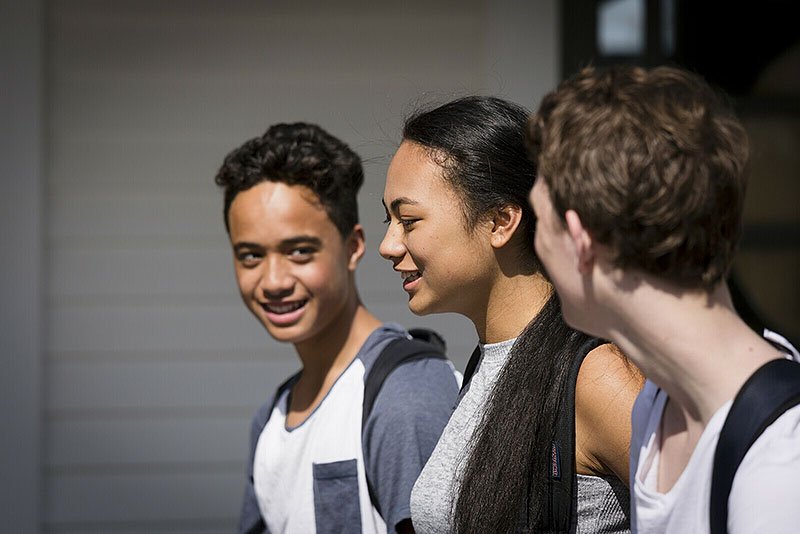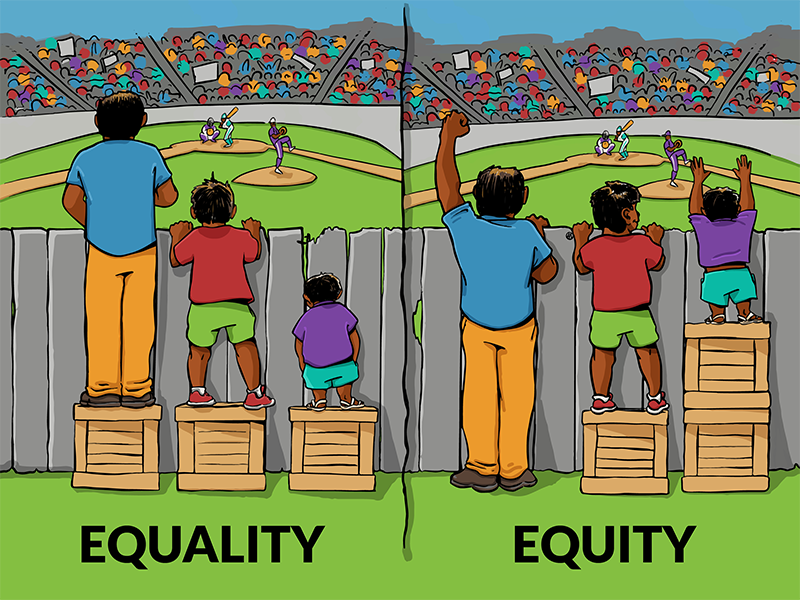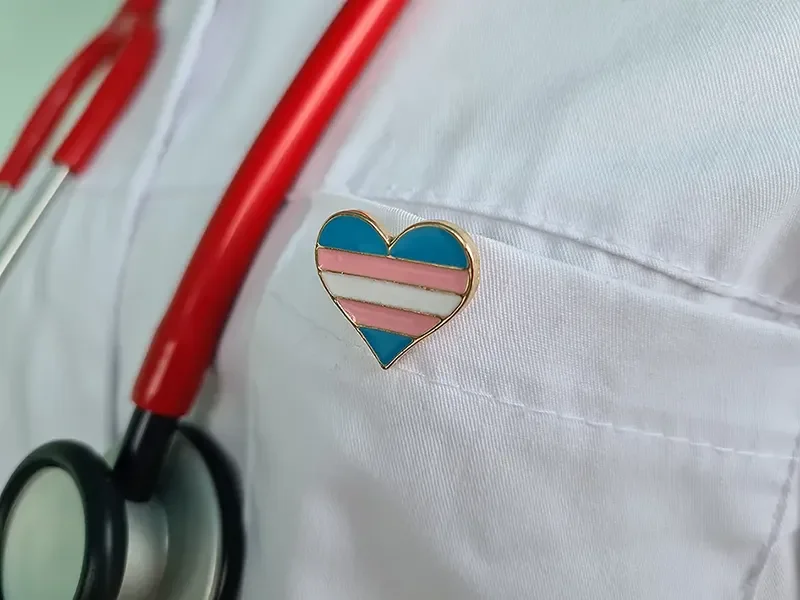Bridging the gap: Understanding health equity in New Zealand
By MAS Team
Just ask anyone who ever tried to fit out a social sports team in a bargain uniform – people are very different sizes and “one size fits all” is wishful thinking. As our society becomes more diverse, the health system in Aotearoa New Zealand is learning the same lesson and health equity is being propelled to the forefront of our national news agenda. Here we get 2 perspectives on health equity from rainbow community and rural health experts.
Across Aotearoa New Zealand and worldwide, we know that access to healthcare isn’t always equal. People in different groups face different barriers to getting the care they need, with their socioeconomic position, ethnicity, sexual orientation and geographic location, all playing a role.
Barriers to healthcare can be complex, wide-ranging and intergenerational. They can be influenced by poverty, lower levels of education, substandard housing, discrimination, and deeply ingrained systems that inherently benefit one group over another and promote unequal allocation of resources.
In Aotearoa New Zealand, discrepancies in health outcomes between Māori and non-Māori are stark and persistent. Regardless of the reasons, research shows that Māori continue to experience the worst health and social outcomes of any population group in New Zealand.
Making systemic changes at the national policy level can be a slow process and difficult to implement. Other things like making a practice or clinical environment more welcoming, or taking the time to boost our knowledge or cultural understanding, can happen much faster and go a long way to helping people feel respected and included.

On the surface, treating everyone equally sounds like a good thing. But life is rarely that straightforward. What happens when not everyone is starting from the same place? To think about equity and equality, picture 3 people trying to look over a fence to watch a rugby game – there’s a basketball player, a scientist and a 6-year-old.
Equality would be giving each person the same-sized box to stand on. But when each box is the same height, the basketballer has a great view over the fence, the scientist can just peek over the top, and the 6-year-old is still nowhere close to being able to see what’s on the other side.
Equity would be giving each person a box that is high enough for them all to see over the fence, from a small step ladder for the basketball pro, to something much higher for the 6-year-old, so all 3 get to enjoy watching the game.
In other words, equality means treating everyone the same, but equity is about providing each person with what they need to have the same outcome, and this can look different for everyone.
Or, as Dr Ashley Bloomfield put it, “Equity recognises different people with different levels of advantage require different approaches and resources to get equitable health outcomes.”
Here, we talk with 2 experts from 2 different corners of the health sector, on what equity means to their community.

Image attributed to Interaction Institute for Social Change and the artist Angus Maguire.
For people from Aotearoa New Zealand’s diverse minority cultural groups, health equity begins with feeling safe to discuss your health issues with a primary healthcare professional. Speaking with a doctor about health issues can make anyone feel vulnerable, but if you’re worried about discrimination or a lack of understanding, then going to the GP can be even more uncomfortable.
For members of Aotearoa’s rainbow community, which includes people who identify as gay, bisexual, Takatāpui, MVPFAFF (rainbow Pacifica communities), transgender (a person whose gender identity differs from the sex they were assigned at birth) and non-binary (a person who doesn’t identify as exclusively female or male) even small signals of inclusivity can have a big impact.
“Things like wearing a rainbow lanyard, having queer health topic posters in the waiting room, or wearing pronoun badges or pins can signify a deeper understanding,” says Cameron Leakey, Research Officer at Burnett Foundation Aotearoa.
“For a lot of people, these things don’t speak to them, but for others, they signify that a healthcare provider has done training on cultural safety for rainbow communities, and they’re a friendly provider.”
And of course, being rainbow-friendly is about much more than colourful flags in the waiting room. It’s about walking the talk to provide a safe space for quality care. Cameron points to findings from the transgender and non-binary healthcare survey, Counting Ourselves, which revealed nearly half of trans and non-binary respondents reported being uncomfortable with the idea of discussing their gender with their GP.
“We know that there can be a hesitation in our community to engage with healthcare as a result of fears or experiences of judgement, discrimination, homophobia or transphobia. For many people, not being able to disclose their sexuality or gender safely is a major barrier for accessing appropriate care, and building trust in that provider-patient relationship.”
With formal training still catching up to the evolving needs of the community, Cameron says knowledge gaps in the healthcare workforce can be an additional hurdle.
“Many medical professionals haven’t yet had the opportunity to upskill in aspects affecting rainbow health, like trans and non-binary people accessing gender-affirming care, in whatever capacity that looks like. Specialist services are very busy and general practice is very busy, but these needs are important, and they’re often missed because there’s just not the training available.
“However, we know that rainbow healthcare is making its way into the curriculum for medical training, and opportunities for people to upskill are increasing. This also means being mindful of how rainbow communities intersect with other populations, for example, there are unique considerations for Māori rainbow people and Pacific rainbow people.”
Alongside training and awareness, Cameron says breaking down barriers in rainbow healthcare can be as simple as listening without judgement and allowing for open conversations.
“Things like using neutral language when referring to gender or partners [they/them rather than he/she, or partner/spouse rather than husband/wife] can be a really good way to open conversation, and let people disclose what they’re comfortable with.”

Geography also has a huge impact on health equity. Getting to a health clinic can be a challenge when you live rurally, and the physical distance is only part of the issue.
“Not only do you have the logistics of getting 100km or 200km to the doctor’s clinic, there are also aspects like getting time off work, the cost of running the vehicle, childcare, and potentially staying overnight at the place you need to be,” says Dr Jeremy Webber, Clinical Director of Rural Health at Hauora Taiwhenua Rural Health Network. “This all adds up and can be a big barrier for some people to access the care they need.”
Jeremy says rural communities face complex issues when it comes to health equity, including primary healthcare funding shortfalls, high workloads and burnout, and the problem of attracting and retaining medical professionals in small towns.
“Often doctors in rural communities are working as solo practitioners or there’s only a small team of people at the clinic, so if one person leaves, this has a much bigger impact. We also have lots of people working in rural health who are nearing retirement. In some ways, rural health has the same challenges as anywhere else, but the issues are often heightened in rural areas.”
Over the pandemic, online doctor services like Telehealth bridged the access gap for many across Aotearoa. But these days, they’re more of a tool in the toolbox rather than a complete solution.
“While we can’t look at Telehealth as an alternative to [personally delivered] healthcare, it’s useful in many ways,” says Jeremy. “Particularly with after-hours calls, as [patients] can go to the online service first and if it’s urgent, then a doctor can be sent out. That way, it can help to offset workloads. This is also important with recruitment of doctors to smaller towns, as many say that having to do a lot of after-hours work would put them off taking up a rural role.”
So what are some solutions that will enhance health equity for rural communities that rely on their local practice?
Jeremy says empowering other skilled professionals like nurse practitioners and paramedics to take a bigger role in small clinics is key for sharing the workload and seeing patients sooner. Another step is changing mindsets.
“Exposing students to rural health careers early on is really important, as lots of students only get to see a career path in the big hospitals. We need to change this to demonstrate that rural health is an incredible career. You get to live in beautiful settings, and as a rural doctor you’re really embedded in the community. It’s about raising the mana of rural practice, empowering the profession and also empowering the people we serve.”
Watch MAS Foundation talk about what health equity means to them below:

Inventor and MAS Member Dr David Tipene-Leach tells us how he developed a woven flax bassinet that enables parents to safely bed-share with their little ones.

University of Otago law student Clementine Rose recently received a MAS Here for Good Scholarship, which rewards students who actively volunteer.

In early 2020, MAS Foundation gave Men's Health Trust a grant to help them launch their Goodfellas programme. Read more on how partnering with MAS Foundation helped them make an impact.